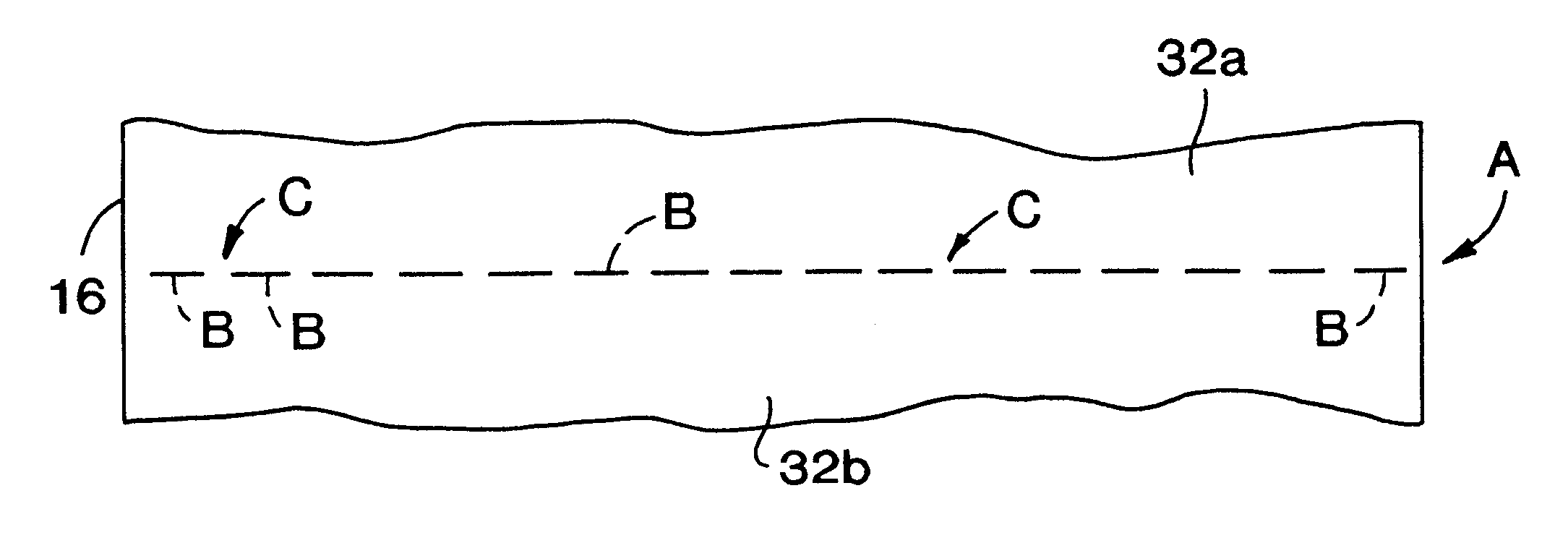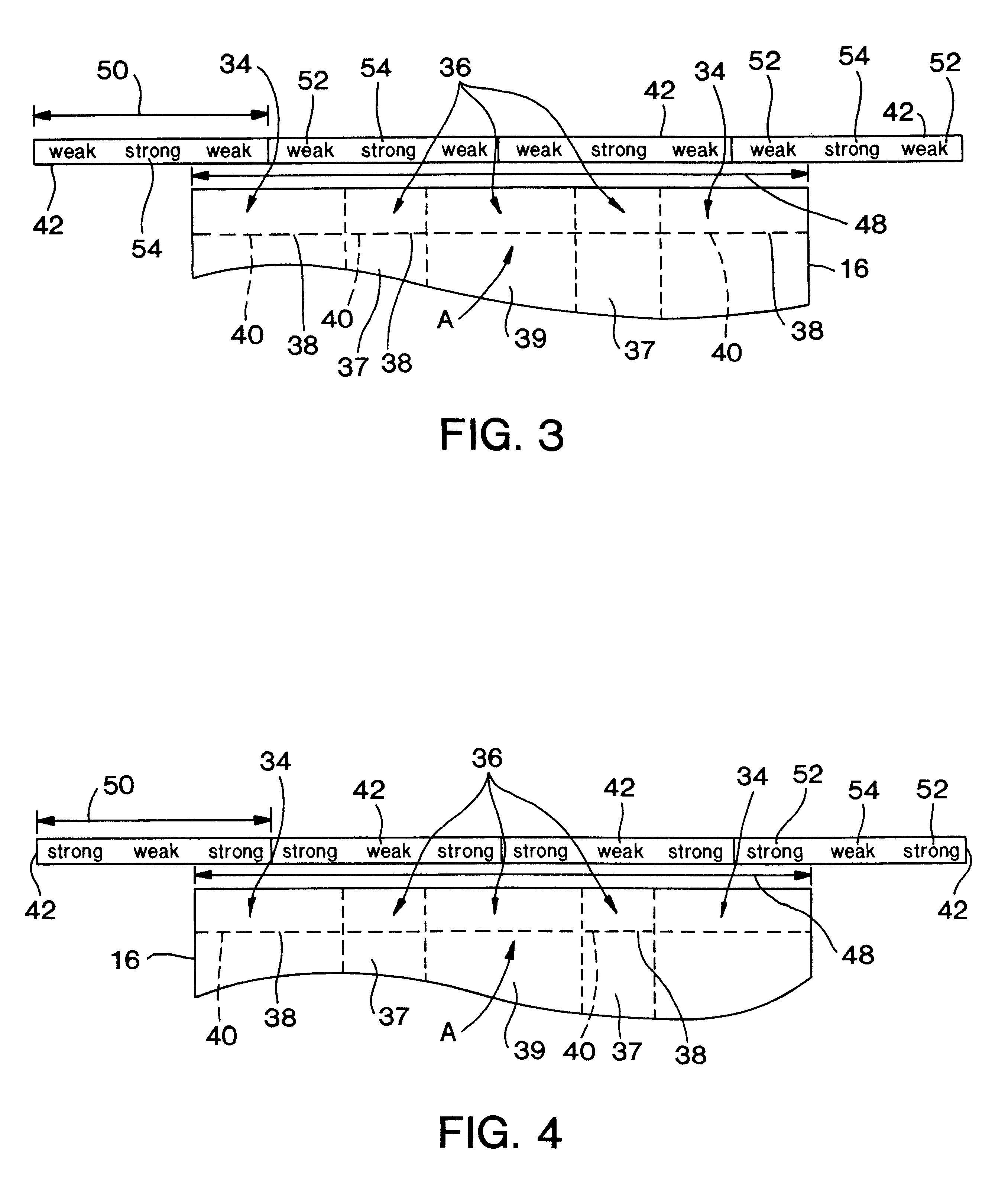Perforated centerflow rolled product
a technology of perforation centerflow and rolled products, applied in the direction of identification means, thin material processing, packaging, etc., can solve the problems of not being particularly relevant, poor detachment has always been a major consumer issue, etc., and achieves strong bonding strength, reducing total perforation defects, and reducing roping/streaming defects
- Summary
- Abstract
- Description
- Claims
- Application Information
AI Technical Summary
Benefits of technology
Problems solved by technology
Method used
Image
Examples
Embodiment Construction
Centerflow rolled webs of material were perforated with different arrays of perforation blades according to FIGS. 5a through 5d and tested as follows:
A roll of Hydroknit.RTM. material having a width of 12 inches was disposed in a 1.2 gallon dispenser. The dispenser was a WetTask.RTM. dispenser having a tri-lobal dispensing disk, as described in U.S. Pat. No. 5,560,514. Water was added to the dispenser in order to saturate the web material. Hydroknit.RTM. is a 2.6 osy (88 gsm) hydroentangled pulp and polypropylene spunbond material (2.0 osy pulp / 0.6 osy polypropylene spunbond). The "control" product was perforated with one of two types of conventional perforation blades. The conventional blades were chosen depending on the material stiffness of the Hydroknits material and had a profile of 0.030 inch bonds and 0.3125 inch perforations or 0.040 inch bonds and 0.375 inch perforations. The differences between the control blades was not significant to the tests. The perforations and bonds...
PUM
| Property | Measurement | Unit |
|---|---|---|
| length | aaaaa | aaaaa |
| length | aaaaa | aaaaa |
| length | aaaaa | aaaaa |
Abstract
Description
Claims
Application Information
 Login to View More
Login to View More - R&D
- Intellectual Property
- Life Sciences
- Materials
- Tech Scout
- Unparalleled Data Quality
- Higher Quality Content
- 60% Fewer Hallucinations
Browse by: Latest US Patents, China's latest patents, Technical Efficacy Thesaurus, Application Domain, Technology Topic, Popular Technical Reports.
© 2025 PatSnap. All rights reserved.Legal|Privacy policy|Modern Slavery Act Transparency Statement|Sitemap|About US| Contact US: help@patsnap.com



